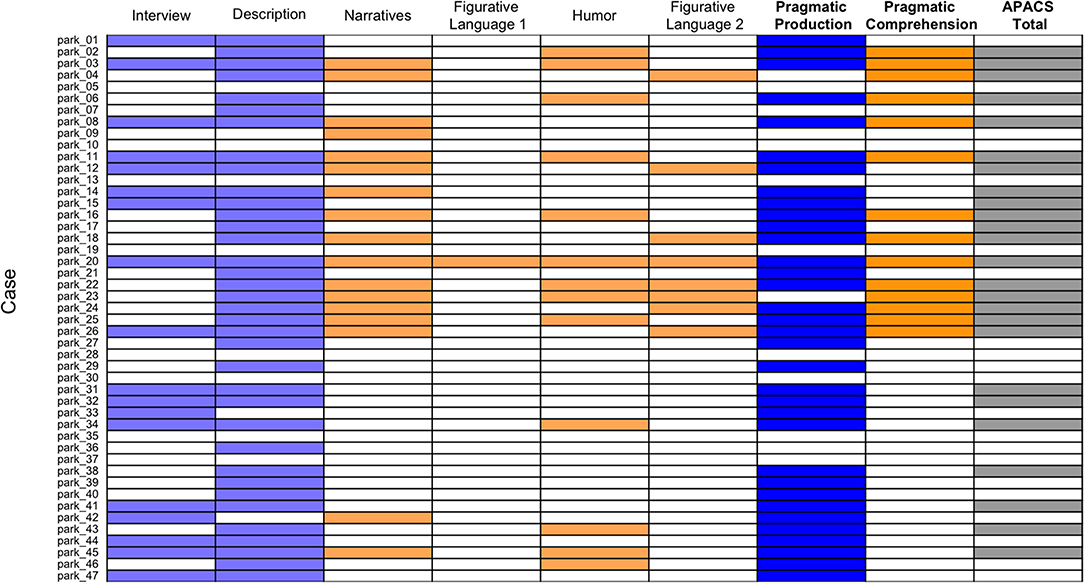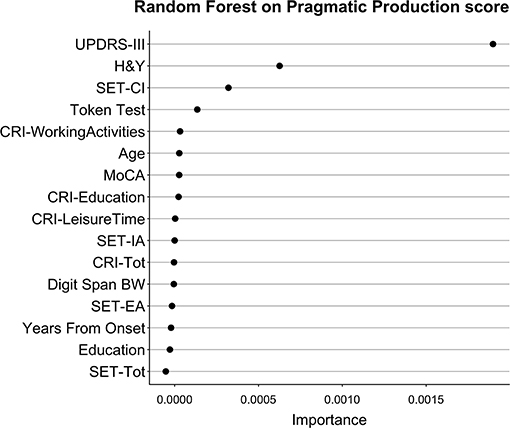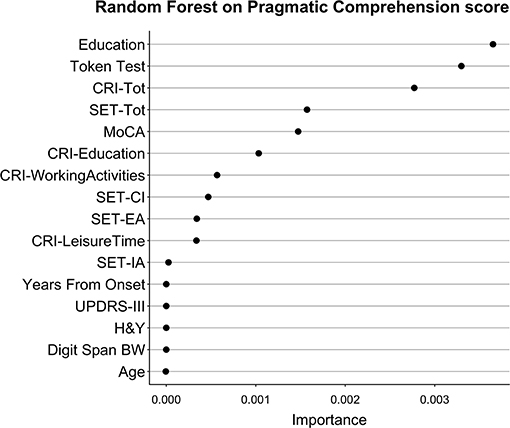
95% of researchers rate our articles as excellent or good
Learn more about the work of our research integrity team to safeguard the quality of each article we publish.
Find out more
CORRECTION article
Front. Psychol. , 08 October 2019
Sec. Psychology of Language
Volume 10 - 2019 | https://doi.org/10.3389/fpsyg.2019.02201
This article is part of the Research Topic Figurative Language in Typical and Clinical Populations View all 19 articles
This article is a correction to:
Pragmatic Language Disorder in Parkinson’s Disease and the Potential Effect of Cognitive Reserve
 Sonia Montemurro1,2
Sonia Montemurro1,2 Sara Mondini1,2
Sara Mondini1,2 Matteo Signorini3
Matteo Signorini3 Anna Marchetto3
Anna Marchetto3 Valentina Bambini4
Valentina Bambini4 Giorgio Arcara5*
Giorgio Arcara5*A Corrigendum on
Pragmatic Language Disorder in Parkinson's Disease and the Potential Effect of Cognitive Reserve
by Montemurro, S., Mondini, S., Signorini, M., Marchetto, A., Bambini, V., and Arcara, G. (2019). Front. Psychol. 10:1220. doi: 10.3389/fpsyg.2019.01220
In the original article, there were mistakes in Figures 3, 4, and 5 as published. The image reported as Figure 3 is the image that should be reported as Figure 4. The correct Figure 3 is missing from the paper. The image reported as Figure 4 is basically a duplicate of Figure 5 (note that the small differences between the two figures are normal, and due to the stochastic processes involved in the generation of the results used for the image). Figure 5 has a minor mistake in the position of x-axis labels.
As a consequence of these mistakes, the legends reported in the manuscript for Figures 3, 4, and 5 do not appropriately describe what is depicted. The correct Figures 3, 4, and 5 and their respective legends appear below.

Figure 3. Performance below cut-off of Parkinson patients in pragmatic tasks and composite scores. The figure shows patients with PD who scored below cut-off (i.e., below 5th percentile of healthy control data) in the APACS tasks and in the three composite scores. Each row denotes a patient, whose case number is reported in the left part of the figure, consistently with Supplementary Table S1. Each column denotes a task or composite score. White cells indicate a performance equal to or above cut-off, whereas colored cells indicate a performance below cut-off. Light blue cells are used in the columns with the pragmatic tasks included in the Pragmatic Production score and dark blue cells are used for the Pragmatic Production score. Light orange cells are used in the columns of the pragmatic tasks included in the Pragmatic Comprehension score, and dark orange cells are used for the Pragmatic Comprehension score. Dark gray is used for APACS Total.

Figure 4. Importance of all variables in Random Forests with Pragmatic Production as dependent variable. The figure shows the Importance associated with each variable in the Random Forests with Pragmatic Production score from APACS as dependent variable. Variables are sorted from top to bottom according to Importance, so that the variables on top are the ones with the highest Importance.

Figure 5. Importance of all variables in Random Forests with Pragmatic Comprehension as dependent variable. The figure shows the Importance associated with each variable in the Random Forests with Pragmatic Comprehension score from APACS as dependent variable. Variables are sorted from top to bottom according to Importance, so that the variables on top are the ones with the highest Importance.
The authors apologize for the errors and state that this does not change the scientific conclusions of the article in any way. The original article has been updated.
Keywords: Parkinson's disease, pragmatic abilities, Cognitive Reserve, communication, discourse, figurative language
Citation: Montemurro S, Mondini S, Signorini M, Marchetto A, Bambini V and Arcara G (2019) Corrigendum: Pragmatic Language Disorder in Parkinson's Disease and the Potential Effect of Cognitive Reserve. Front. Psychol. 10:2201. doi: 10.3389/fpsyg.2019.02201
Received: 30 August 2019; Accepted: 12 September 2019;
Published: 08 October 2019.
Copyright © 2019 Montemurro, Mondini, Signorini, Marchetto, Bambini and Arcara. This is an open-access article distributed under the terms of the Creative Commons Attribution License (CC BY). The use, distribution or reproduction in other forums is permitted, provided the original author(s) and the copyright owner(s) are credited and that the original publication in this journal is cited, in accordance with accepted academic practice. No use, distribution or reproduction is permitted which does not comply with these terms.
*Correspondence: Giorgio Arcara, Z2lvcmdpby5hcmNhcmFAZ21haWwuY29t
Disclaimer: All claims expressed in this article are solely those of the authors and do not necessarily represent those of their affiliated organizations, or those of the publisher, the editors and the reviewers. Any product that may be evaluated in this article or claim that may be made by its manufacturer is not guaranteed or endorsed by the publisher.
Research integrity at Frontiers

Learn more about the work of our research integrity team to safeguard the quality of each article we publish.